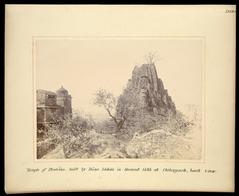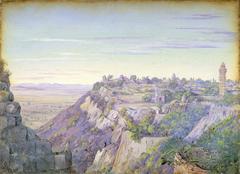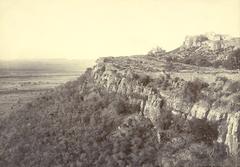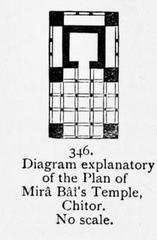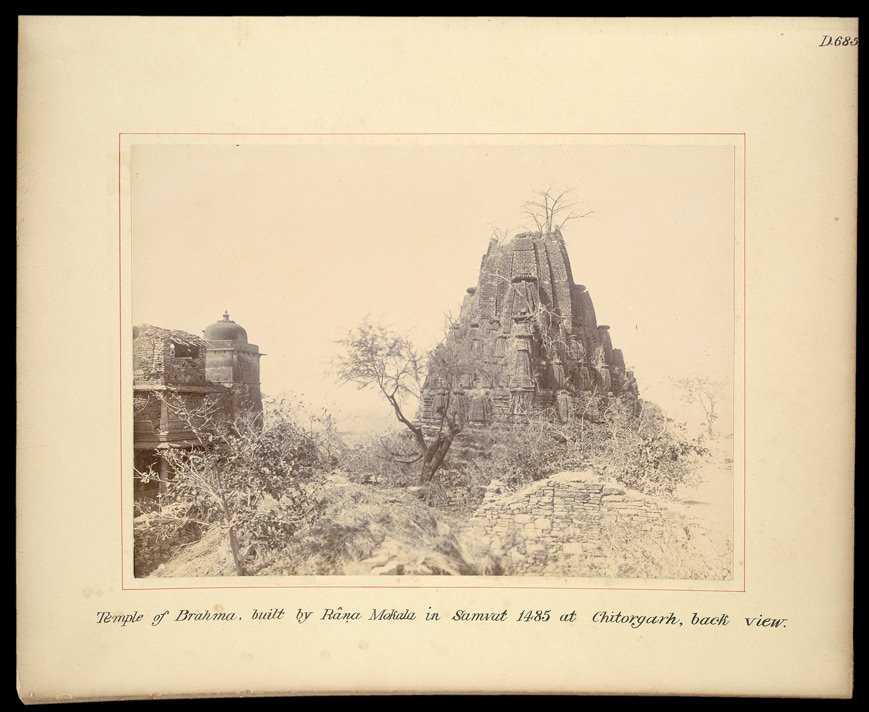
Chittorgarh Fort Visiting Hours, Tickets, and Complete Travel Guide
Date: 14/06/2025
Introduction
Chittorgarh Fort, perched atop a 180-meter-high hill in Rajasthan, India, is the largest fort in the country and a UNESCO World Heritage Site. Spanning over 700 acres, it is an enduring symbol of Rajput courage, architectural mastery, and India’s rich cultural tapestry. The fort’s sprawling complex includes seven fortified gates, magnificent palaces such as Rana Kumbha and Padmini Palace, grand towers like Vijay Stambh and Kirti Stambh, sacred temples, and ingenious medieval water reservoirs. Chittorgarh Fort has witnessed legendary sieges and stories of valor, sacrifice, and royal tradition, making it one of Rajasthan’s most sought-after historical destinations (Rajasthan Direct, City Guide Page, Ancient Origins).
This comprehensive guide covers everything you need to plan your visit: historical highlights, visiting hours, ticket information, accessibility tips, and must-see attractions.
Table of Contents
- Introduction
- Historical Overview
- Architectural Highlights
- Visiting Hours & Ticket Information
- Accessibility & Getting There
- Key Attractions Within the Fort
- Essential Visitor Tips
- Festivals & Special Events
- Frequently Asked Questions (FAQ)
- Conclusion & Further Reading
Historical Overview
Origins and Early Construction
Founded in the 7th century CE by Chitrangada Mori of the Maurya dynasty, Chittorgarh Fort began as a strategic hilltop citadel fortified to withstand invasions. Early enhancements included robust walls and innovative water reservoirs, essential for survival in Rajasthan’s arid climate (cityguidepage.com, rajasthandirect.com).
Expansion Under Successive Dynasties
The fort’s prominence rose under Bappa Rawal of the Guhila (Sisodia) dynasty in the 8th century, becoming the Mewar capital. Over centuries, the Sisodia Rajputs expanded the fort with palaces, temples, and 13-kilometer-long defensive walls, housing up to 100,000 people at its peak (ancient-origins.net). Later rulers, including the Paramaras, blended Rajput and Mughal styles, further enhancing the fort’s architectural diversity (cityguidepage.com).
Major Sieges and Turning Points
- 1303: Alauddin Khilji’s Siege – A legendary siege driven by the quest for Rani Padmini, resulting in the fort’s fall and the first recorded jauhar (cityguidepage.com).
- 1535: Bahadur Shah of Gujarat – Another siege marked by fierce resistance and mass sacrifice (historyhit.com).
- 1567–68: Akbar’s Conquest – After a prolonged siege, the fort fell, leading to the third jauhar and the relocation of Mewar’s capital to Udaipur (chittorgarhonline.in).
Architectural Highlights
Fortifications and Gates
Chittorgarh Fort’s seven monumental gates—Ram Pol (main), Padal Pol, Bhairon Pol, Hanuman Pol, Ganesh Pol, Jodla Pol, and Laxman Pol—demonstrate advanced medieval defense strategies, with angled approaches, iron spikes, and fortified bastions (Trans India Travels).
Palaces
- Rana Kumbha Palace: The fort’s oldest palace, associated with Maharana Kumbha, Rani Padmini, and poet-saint Meerabai. Its ruins evoke stories of royal life and sacrifice (Rajasthan Tour Planner).
- Padmini Palace: Set beside a lotus pool, this palace is central to the legend of Rani Padmini and the 1303 siege.
- Fateh Prakash Palace and Museum: Built in the 19th century, it now houses a museum displaying royal artifacts, weapons, and art (E India Tourism).
- Ratan Singh Palace: Located near Ratneshwar Lake, this palace served as a royal residence and court.
Towers
- Vijay Stambh (Victory Tower): Erected by Maharana Kumbha in the 15th century to commemorate his victory over Mahmud Khilji, this 37-meter-high tower is adorned with intricate carvings. Climb its steps for panoramic views (Thrillophilia).
- Kirti Stambh (Tower of Fame): A 12th-century Jain tower dedicated to Adinath, featuring exquisite Jain sculptures.
Temples
- Meera Temple: Honoring the poet-saint Meerabai, this temple is a hub of devotion and artistic beauty (TravelSetu).
- Kalika Mata Temple: Originally a Sun Temple, later dedicated to goddess Kali, it is especially vibrant during Navratri (Rajasthan Tour Planner).
- Jain Temples: Including the Sathis Deori Temple, known for its elaborate marble work.
Water Systems
The fort once boasted 84 water bodies; today, 22 remain, including the Gaumukh Reservoir, which features a natural spring and was vital during sieges (rajasthandirect.com).
Visiting Hours & Ticket Information
Chittorgarh Fort Visiting Hours
- Daily: 9:00 AM – 6:00 PM (Some sources cite 9:30 AM – 6:30 PM; check locally for seasonal variations) (E India Tourism).
Ticket Prices
- Indians: ₹50 (adults), children under 12 free
- Foreigners: ₹250 (adults)
- Camera Fee: ₹50 (still camera); additional charges may apply for video cameras
- Light & Sound Show: Separate ticket, usually between 7:00 PM and 8:00 PM
Tickets can be purchased at the entrance or online via official Rajasthan tourism portals. Advance booking is recommended during peak season and festivals.
Accessibility & Getting There
Accessibility
The fort’s terrain is rugged and includes steep ascents and steps. Some areas have been made more accessible with ramps and paved paths, but wheelchair access is limited. Designated parking and assistance are available near main entrances—visitors with mobility challenges should consult the fort’s administration ahead of their visit.
How to Reach
- By Air: Maharana Pratap Airport, Udaipur (approx. 115–120 km)
- By Train: Chittorgarh Railway Station, well-connected to major cities
- By Road: Regular buses and taxis from Udaipur, Jaipur, and Delhi
Key Attractions Within the Fort
- Ram Pol and the Seven Gates: Explore the main entrance and defensive architecture (Trans India Travels).
- Vijay Stambh and Kirti Stambh: Climb these towers for panoramic views.
- Rana Kumbha Palace, Padmini Palace, Ratan Singh Palace: Discover royal residences and legends.
- Meera Temple, Kalika Mata Temple, Jain Temples: Experience the fort’s spiritual heritage.
- Gaumukh Reservoir and Ratneshwar Lake: Enjoy tranquil water bodies and scenic vistas.
- Fateh Prakash Palace Museum: View royal collections and artifacts (E India Tourism).
- Bassi Wildlife Sanctuary: Located nearby, ideal for nature lovers (Rajasthan Tour Planner).
- Jaimal and Patta Palaces, Maha Sati, and Sati Handprints: Sites of heroic defense and sacrifice.
Essential Visitor Tips
- Footwear & Clothing: Wear sturdy shoes for uneven ground; dress modestly for temple visits.
- Hydration: Carry water and snacks, as in-fort facilities are limited.
- Guided Tours: Available in multiple languages; enhance your visit with historical context.
- Photography: Permitted in most areas; drones require special permission.
- Best Time to Visit: October–March for pleasant weather; early mornings to avoid heat and crowds.
- Safety: Be cautious on steep steps and ramparts, especially with children.
Festivals & Special Events
- Chittorgarh Fort Festival (January): Cultural performances and fairs.
- Jauhar Mela: Commemorates Rajput sacrifice with processions and ceremonies.
- Diwali, Teej, Meera Mahotsav: The fort becomes a hub for music and dance during these festivals.
Frequently Asked Questions (FAQ)
Q: What are the fort’s opening hours?
A: Daily, 9:00 AM to 6:00 PM (check for seasonal updates).
Q: How much are the tickets?
A: ₹50 for Indian adults, ₹250 for foreigners, free for children under 12.
Q: Are guided tours available?
A: Yes, official guides and audio tours are available.
Q: Is the fort wheelchair accessible?
A: Limited; contact administration for assistance.
Q: What are the must-see attractions?
A: Rana Kumbha Palace, Vijay Stambh, Padmini Palace, Kalika Mata Temple, Gaumukh Reservoir.
Q: Is photography allowed?
A: Yes, in most areas; special permission required for drones.
Conclusion
Chittorgarh Fort is a living testament to Rajasthan’s storied past, blending architectural marvels, heroic legends, and vibrant culture. By planning your visit around official hours and ticketing information, and following practical tips for accessibility and safety, you can enjoy a rewarding and memorable experience. For ongoing travel updates, event news, and detailed guides, download the Audiala app and join our community.
References and Further Reading
- Chittorgarh Fort – Rajasthan Direct
- When Was Chittorgarh Fort Built? – City Guide Page
- Chittorgarh Fort – Ancient Origins
- Key Attractions – Rajasthan Tour Planner
- Chittorgarh Fort – E India Tourism
- Chittorgarh Fort – History Hit
- History of Chittorgarh – Chittorgarh Online
- Chittorgarh Fort – Trans India Travels
- Chittorgarh Fort – Thrillophilia
- Chittorgarh Fort – TravelSetu
